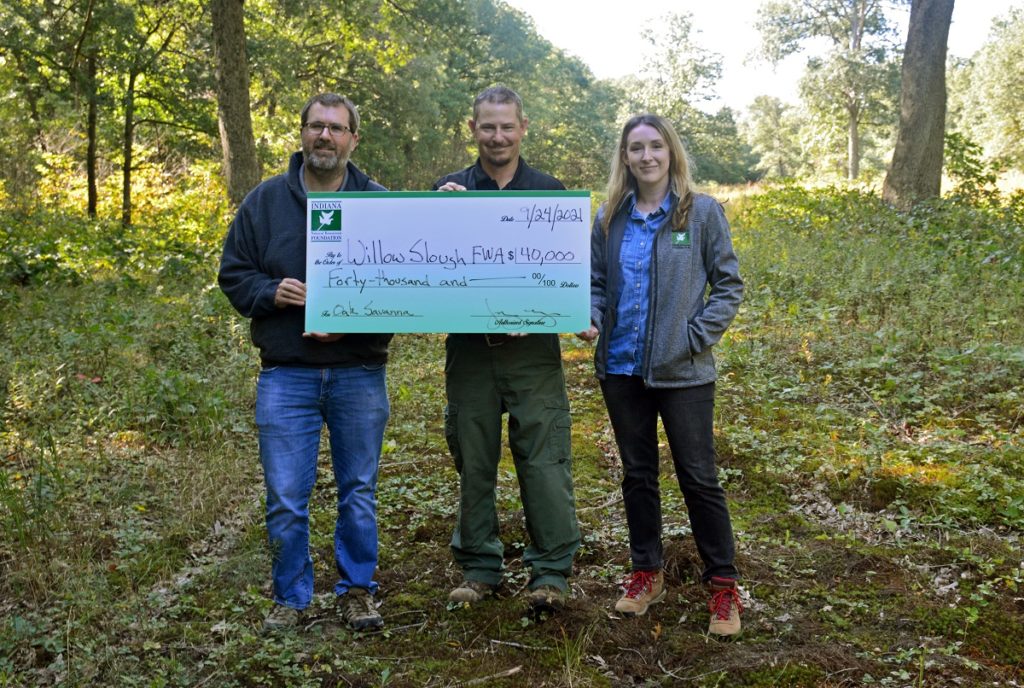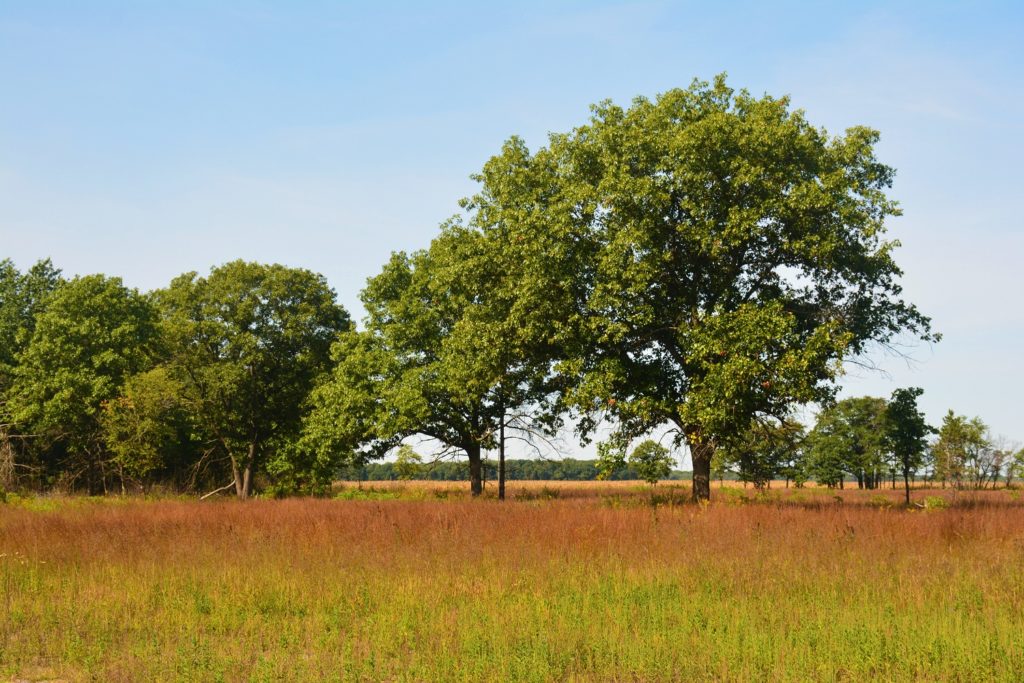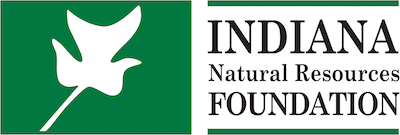Savanna Habitat Restoration at Willow Slough Fish & Wildlife Area

Willow Slough Fish & Wildlife Area is a prime spot in northwest Indiana for wildlife watching, hunting, fishing and camping, and it is getting better. Staff at Willow Slough FWA have been working to restore degraded savanna habitat in the region for more than seven years. Thanks to our recent donation of $40,000, approximately 100 acres of savanna will be restored and become home to many species that depend on it.

Rob Seilheimer (INRF), Mike Schoof (Willow Slough FWA), and Julia Hodson (INRF) at Willow Slough FWA.
Savannas were once a dominant habitat throughout the Midwest but have dwindled in recent decades. What sets a savanna apart from other habitats is its mosaic of grasslands and trees, with much less canopy cover than a forest or woodland. A single tree growing without competition for nutrients from surrounding trees can flourish, and the grassland surrounding the tree offers pollinators and various plants and wildlife an opportunity to thrive. Property staff have already seen numbers of wildlife increase since restoration work began.
“The bobwhite quail populations have grown tremendously in areas where work like this has already occurred,” said property manager Mike Schoof. “We have more than doubled our fall covey counts over the last five years. By doing a project like this, diversity will flourish, and hundreds of species will be found within the site.”

A nesting wild pheasant rests at Willow Slough FWA.
Other species that have greatly increased since restoration work began include plants like lupine, blazing star and wild sunflowers. Various bee species, including some that are rare, have increased as have other pollinators. Game and nongame species that benefit include turkeys, Eastern whip-por-wills, red-headed woodpeckers, badgers, bull snakes and six-lined racerunners.
Property staff pinpointed roughly 3,000 acres to restore at the beginning of the project, and they have completed work on more than 750 acres thus far. Our contribution will help fast track another 100 acres of restoration of an area that is currently closed-canopy forest where shade-tolerant species are abundant. Savanna will be restored by removing woody species, increasing fire occurrences, and doing continued maintenance.

Savanna habitat at Willow Slough FWA.
The targeted area will tie together two portions of the Bill Barnes Nature Preserve in Area 12, along with a few other smaller areas that property staff have been working on. Connecting these areas will create an uninterrupted expanse of savanna for wildlife and plants to settle and grow. An undertaking of this magnitude will take years, possibly decades, to complete and maintain.
“The Indiana Natural Resources Foundation’s gift is a huge contribution to this project,” Schoof said. “We hope that by seeing what a positive impact this donation has on Willow Slough FWA, other groups may come forward down the road and continue to help push the larger project forward.”
You can help make that happen. Willow Slough FWA is looking for volunteers to help with bird monitoring before and after the project is completed. The purpose is to document the changes within the bird community as well as how restoration efforts influence the presence of different species on the landscape. Assistance with seed gathering of native wildflowers, scattering of seeds, and invasive species control are just a few other ways volunteers can help.
Monetary contributions also help greatly, from both individuals and businesses. If you would like to contribute toward habitat restoration projects like this, please donate today.
